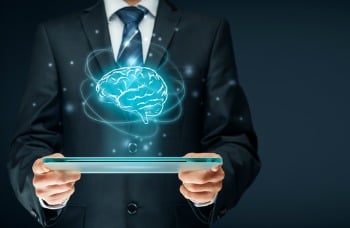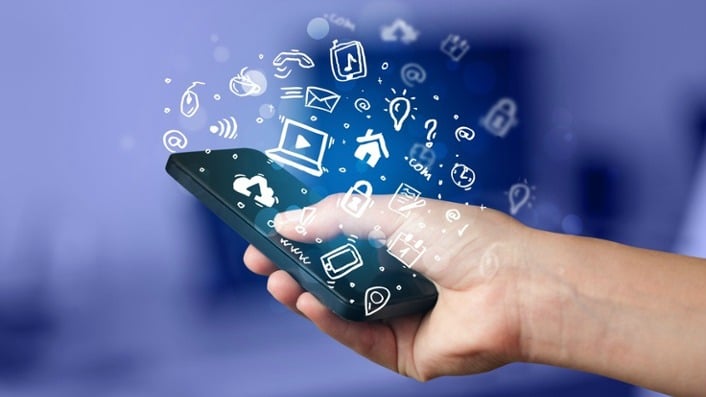 There is an ongoing convergence of four key technologies that are poised to transform the Information and Communications Technology (ICT) ecosystem. Those technologies are Fifth Generation (5G) cellular, Artificial Intelligence (AI), Data Analytics, and the Internet of Things (IoT).
There is an ongoing convergence of four key technologies that are poised to transform the Information and Communications Technology (ICT) ecosystem. Those technologies are Fifth Generation (5G) cellular, Artificial Intelligence (AI), Data Analytics, and the Internet of Things (IoT).
Each of these technologies will have a huge impact in their own right, both on ICT as well as on all major industry verticals that depend on telecom and IT services. However, the combination of these technologies is poised to create opportunities to significantly enhance user experiences for communications, applications, digital content, and commerce.
Artificial Intelligence
Artificial Intelligence (AI) represents machine-based intelligence, typically manifest in "cognitive" functions that humans associate with other human minds. There are a range of different technologies involved in AI including Machine Learning, Natural Language Processing, Deep Learning, and more. Cognitive Computing involves self-learning systems that use data mining, pattern recognition, and natural language processing to mimic the way the human brain works.
AI is increasingly integrated in many areas including Internet search, entertainment, commerce applications, content optimization, and robotics. The long-term prospect for these technologies is that they will become embedded in many different other technologies and provide autonomous decision making on behalf of humans, both directly, and indirectly through many processes, products, and services. AI is anticipated to have an ever increasing role in ICT including both traditional telecommunications as well as many communications enabled applications and digital commerce.
AI is rapidly becoming integrated into many aspects of communication, applications, content, and commerce. One such area transformed by AI is Customer Relationship Management (CRM). AI enabled chatbots represent an advanced technology for automated CRM solutions. Existing User Interfaces (UI) do not scale very well. Chatbots represent a way for brands, businesses, and publishers to interact with users without requiring them to download an app, become familiar with a new UI, or configure and update regularly. Chatbots provide conversational interfaces supported by AI to provide automated, contextual communications.
AI is undergoing a transformation from silo implementations to a utility function across many industry verticals as a form of Artificial General Intelligence (AGI) capability. This capability is becoming embedded and/or associated with many applications, services, products, and solutions. Mind Commerce sees AI innovation in a variety of areas including personalized AI to both support and protect end-users. The Internet of Things (IoT) is a particularly important area for AI as a means for safeguarding assets, reducing fraud, and supporting analytics and automated decision making.
Another important industry solution for AI is Virtual Personal Assistants (VPA) applications, which use Autonomous Agents and Smart Machine technology to enable an Ambient User Experience for applications and services. VPA rely upon software that provides advice while interfacing in a human-like fashion. The emerging role of intelligent VPA encompasses answering questions in an advisory role and performing specific actions virtually on behalf of humans. The Internet of Things (IoT) intensifies this need as machines interact with other machines and humans autonomously.
Fifth Generation (5G) Cellular

Leveraging various technologies such as directional antennas, millimeter wave RF, and edge computing solutions, 5G network provides much higher data rates (in a range of several gigabits per second) as compared to 4G/LTE. Equally important, 5G will provide ultra-low latency (less than 1 millisecond delay) required for certain portable or mobile apps and services such as industrial automation, robotics, haptic Internet, and virtual reality.
Unlike LTE /4G, 5G will represent a purpose-built technology, designed and engineered to facilitate connected devices as well as automation systems. In many ways, 5G will be a facilitator and an accelerator of the next industrial revolution, often referred to as Industry 4.0. There is a need to look beyond smart factories, intelligent products and services towards enterprise as a whole and the unique benefits of high capacity urban wireless applications.
5G is also being standardized to provide improvements to the Internet of Things (IoT). This will be especially important for legacy for Communication Service Providers (CSP) as they will have an arguably much more robust alternative for IoT Wide Area Networks (WAN) than the current non-cellular IoT WAN networks in operation today. While some wireless carriers are investing in Low-power WAN (LPWAN) for IoT, they are also aggressively planning to provide their own IoT LPWAN as well as offering higher bandwidth for IoT. This is important as IoT is anticipated to be very widespread in scope, impacting virtually every industry vertical. This is why the future of IoT is often referred to as “Massive IoT,” because it will be highly pervasive and impact all sectors. While many IoT apps require only very low bandwidth (and hence LPWAN is good enough and cheap enough for them), there will be a need longer term for more capacity overall as well as band-width on-demand, with strict Quality of Service (QoS) requirements, for many IoT enabled Value-added Services (VAS).
5G also represents a game changing wireless infrastructure transformation for Communication Service Providers (CSP). Next generation equipment will support millimeter wave length radio frequency as well as evolution of LTE, which will be considered by many to be part of 5G heterogeneous networks. In addition, CSPs will deploy next generation equipment at Base Transceiver Stations (BTS) for Mobile Edge Computing (MEC), which will provide distributed computing and effectively transform BTS into distributed datacenters. It is anticipated that the combination of 5G and MEC will transform wireless carrier operations and facilitate enhanced services, new VAS applications, and completely new business models for mobile network operators.
Data Analytics

The management of unstructured data (e.g. Big Data), the leveraging of analytics tools to derive value, and the integration between Cloud, Internet of Things (IoT), and enterprise operational technology are key focus areas for large companies across virtually every industry vertical. Data Analytics provides the means to process vast amounts of machine-generated and often unstructured data. Accordingly, Big Data technologies and predictive analytics enable stream lining of industrial processes. AI technology provides the means to further automate decision making and to engage machine learning for ongoing efficiency and effectiveness improvements.
The convergence of Cloud, Data Management, IoT Platforms and Solutions is enabling the next evolution of data analytics in which enterprise will realize significant tangible and intangible benefits from IoT data. The ability to sort data in a raw format, store it in different structural formats, and subsequently release it for further analytics, will be of paramount importance for all industry verticals. IoT Data as a Service (IoTDaaS) offers convenient and cost-effective solutions to enterprises of various sizes and domain. IoTDaaS constitutes retrieving, storing, and analyzing information and provides customers either of the three or integrated service packages depending on the budget and the requirement.
Every large corporation collects and maintains a huge amount of human-oriented data associated with its customers including their preferences, purchases, habits, and other personal information. As the Internet of Things (IoT) progresses, there will an increasingly large amount of unstructured machine data. The growing amount of human-oriented and machine generated data will drive substantial opportunities for AI support of unstructured data analytics solutions. Industrial IoT (IIoT) and Enterprise IoT deployments will generate a substantial amount of data, most of which will be of the unstructured variety, requiring next generation data analytics tools and techniques. Streaming data IoT business data is highly valuable when it can be put into context and processes in real-time as it will facilitate completely new product and service offerings.
Internet of Things
The Internet of Things (IoT) refers to uniquely identifiable objects (things) and their virtual representations in an Internet-like structure. Stated differently, the concept involves the notion that there are many things (assets, objects, etc.) in the world that may be addressed/labeled/cataloged for various purposes. The world is moving beyond standalone devices into a new era where everything is connected via IoT technologies. This has broad and deep implications for products, services, and solutions across every industry vertical.
IoT technologies and solutions may be broadly classified into three categories: (1) Consumer IoT, (2) Enterprise IoT, and (3) Industrial IoT.
Consumer IoT
In terms of Consumer IoT, there are a few particularly important consumer-oriented markets including Connected Automobiles, Connected Homes, and personal electronics such as Wearable Technology.
Connected Automobiles
Connected Automobiles refers to the use of IoT and broadband communications (LTE, WiFi, and soon 5G) technology in the car with the use of smartphones or other technologies typically manifest as handheld or wearable devices. Vehicles are at the forefront of a major convergence happening that includes a few key technologies: 5G, Artificial Intelligence, Data Management (Big Data, Analytics, Visualization, etc.), Cloud Technologies, and IoT.
Connected vehicle technology is rapidly evolving to encompass Vehicle-to-Vehicle (V2V), Vehicle-to-Infrastructure (V2I), Vehicle-to-Device (V2D), and Vehicle-to-Pedestrian (V2P) signaling and communications. Integration with non-vehicle industry vertical applications and services are realized through various Vehicle-to-Home (V2H), Vehicle-to-Device (V2D), and Vehicle-to-Grid (V2G) solutions. Collectively speaking, the term Vehicle-to-Everything (V2X) encompasses all of these technologies, use cases, applications, and services.
At its core, V2V is about public and personal safety as the technologies provide signaling and communications for collision avoidance and notice of potential hazards that may affect more than one vehicle. Similarly, V2P technology supports signaling to pedestrians about potential vehicular dangers. V2I technology allows connected cars to interact with surrounding infrastructure such as traffic signals, buildings, kiosks/billboards, parking lots, and even humans. It is important to understand that V2X technologies and solutions also provide a foundation upon which commercial services and applications will be developed and supported.
Connected Homes
Connected (e.g. Smart) Homes represent an Internet connected residences that provide an enhanced lifestyle for its occupants by way of home automation as well as enhanced information, entertainment, and safety services. The Connected Home ecosystem is rapidly expanding beyond merely Connected Entertainment (TV, Receiver, DVD Recorder, Media Player, Gaming Consoles) to include many areas such as Home and Office Equipment (Printer, VoIP Phone, etc.), Personal Consumer Electronics (Wireless IP Camera, Smartphone, Tablet, Portable Media Players, Navigation Devices, etc.), Energy Management (Temperature, Lighting, Heating and Air Conditioning), Safety, and Smart Consumer Appliances (Washing Machine, Refrigerator, etc.), and more.
The combination of Smart Home technologies with Smart Appliances is transforming consumer lifestyles. Tasks that were purely a drudgery in the past are now easy, and in some cases, actually engaging and fun as appliances also act as information and entertainment conduits by way of connected home solutions. In addition, major home appliances are increasingly becoming much easier to maintain and replace as the cloud-based “as a service” model transforms products into easy to use and informative services.
Wearable Technology

Wearable technology is increasingly becoming an important medium for communication, infotainment services, health solution, textile, military, and industrial solutions. Wearables provide both a new user interface as well as a convenient and always available means of signaling, communications, and control via IoT.
This segment has the potential for massive transformation in many industries. Early adopter industries include clothing, healthcare, sports, and fitness. For example, wearable devices and digital healthcare represent two dominant trends that are poised to redefine virtually everything about how health products and services are delivered and supported. Ranging from telemedicine to self-monitoring and diagnosis, wearable devices and IoT will start as a novelty and achieve necessity status as insurance company cost optimization become the main driver for adoption and usage.
Mind Commerce sees an evolution from single-purpose wearable devices (such as Smart Watches) to wearable technology that acts as a conduit to the larger universe of objects and the Internet. In terms of wearable technology acting as a conduit, we see the following:
- Controls for Communications and Apps: Gesture, Voice, Motion and others
- Interface between Wireless network and other Devices: Body Area Network (BAN) and ad hoc connections to devices and machines
- Man Machine Interface (MMI): Watch becomes part of ecosystem including AR, BAN, and IoT in general
Mind Commerce sees the prospect for “Smart Wristbands” to be the link to the macro world (via WiFi, WiMAX, 4G, 5G, etc.), the near-to-me world (via BLE, NFC, Beacons, WiFi, etc.), and the personal world (e.g. Body Area Network) including other wearables such as Augmented Reality. Mind Commerce sees Smart Wristbands as just one potential link (between the macro world via wireless WAN technologies and micro/local world via short-range wireless) as there will longer-term be various articles of clothing and other aspects of Body Area Network technology to provide the same function. The primary take-away point is that silo, single-purpose devices (such as Smart Watches) are merely a market introduction strategy. Longer term we see apps and services playing a much more significant role as devices themselves become more utilitarian in nature.
Mind Commerce believes that discoverability (of IoT devices, sensors, and gateways) via wearables and wearable controls of an IoT Dashboard will be an important area. IoT will not only engender new products and services, but also make automation easier and more accessible, we see a new class of consumer service that we refer to as “Ambient IoT.” Ambient IoT refers to the view that IoT (devices, gateways, sensors, etc.) will surround the consumer (e.g. ambient environment). There will be a need for control for the consumer to, minimally know what is out there, and optimally control what is there, or at least control privacy and protect security.
Enterprise IoT
Enterprise IoT is concerned with a variety of factors dealing with business operations efficiency and effectiveness. For example, one important area to consider is the transition from traditional Enterprise Resource Planning (ERP) to IoT enabled ERP, and the impact of IoT enabled ERP on enterprise as a whole. Leading ERP solution providers are adding IoT capabilities into ERP systems to generate meaningful insights for businesses. ERP systems are coupling sensors and other IoT devices to transmit data into ERP system on a real-time basis without human intervention.
In another example that cuts across the Consumer, Enterprise, and Industrial IoT markets, consumer appliances data is fed directly into manufacturers ERP system without using any middleman system. This expedites fault finding program and proactive maintenance using machine generated data. This type of consumer centric ERP process will be the new reality for enterprise ERP systems integrated with IoT solutions.
Industrial IoT
The industrial sector is rapidly integrating Internet of Things (IoT) with other key technologies such as 3D Printing, Big Data and Streaming Analytics. Typically referred to as the Industrial Internet of Things (IIoT) or simply the Industrial Internet, IoT in industry includes Connected Manufacturing in which the combination of certain key technologies are anticipated to substantially advance the Industry 4.0 revolution towards increasingly smarter manufacturing. In terms of core functionality for Connected Manufacturing, IIoT provides the basis for communications, control, and automated data capture. Data Analytics provides the means to process vast amounts of machine-generated and often unstructured data. Accordingly, Big Data technologies and predictive analytics enable streamlining of industrial processes. AI technology provides the means to further automate decision making and to engage machine learning for ongoing efficiency and effectiveness improvements.
IIoT is poised to transform many industry verticals such as Agriculture, Automotive, Healthcare, and more. Initially focusing on improving existing processes and augmented current infrastructure, IIoT will evolve to encompass next generation methods and procedures. For example, IoT in Agriculture (IoTAg) represents a more specific use of technology wherein agricultural planning and operations becomes connected in ways previously impossible if it were not for advances in sensors, communications, data analytics and other IoTAg areas. IoT in Healthcare is another promising example. The evolving area of Real-Time Remote Medical Diagnosis Systems promise to revolutionize the detection and prescriptive abilities of healthcare diagnostics as IoT technologies integrate with Electronic Healthcare Records systems.
IoT in Smart Infrastructure: Smart Cities, Smart Buildings, Smart Homes, and More
IoT technologies are anticipated to make a substantial impact upon physical infrastructure, cities, and buildings. Improving the operational effectiveness and efficiency, safeguarding assets, and establishing new value-added services are the fundamental goals of establishing Smart Infrastructure, Smart Cities, and Smart Buildings. Intelligent use of IoT technologies will be the key to continuous improvements in the areas of process automation. The use of Big Data and Analytics tools will be key to transforming data captured into actionable information.
IoT is an integral component of the global Smart City trend. Many countries have initiated efforts to create "Smart Cities." These efforts include global ICT infrastructure suppliers and communication service providers deploying a combination of technologies including AI, Broadband Wireless, Cloud Computing, and IoT Technology to improve the efficiency and operational effectiveness of urban centers and surrounding suburban environments.
Improving the operational effectiveness and efficiency, safeguarding assets, and establishing new value-added services are a few of the fundamental goals of Smart Buildings. Certain leading companies within the Commercial Real Estate (CRE) sector are realizing tangible benefits from developing Smart Buildings. The CRE industry is able to charge higher fees for IoT enabled intelligent buildings as well as leverage various capabilities to provide Smart Workplace solutions.
Additional Mind Commerce Insights, Findings, and Analysis
For insights and analysis about this ongoing convergence, we recommend the following Mind Commerce reports available from MarketResearch.com:
- 5G in Industry Verticals Market Outlook and Forecasts 2022-2030
- Big Data in IoT Market Outlook and Forecasts 2021-2028
- Artificial Intelligence in Next Generation Networking Market Outlook and Forecasts 2021-2028
- IoT Device Management Market Outlook and Forecasts 2022-2030
Mind Commerce research practice focuses on the convergence of Artificial Intelligence, Broadband Wireless, Cloud Computing, and IoT.
About Mind Commerce
The Mind Commerce® mission is to provide customized research, consulting, training, and writing services for the telecommunications and IT industry. Mind Commerce clients include manufacturers, developers, service providers, industry organizations, and government. Mind Commerce differentiates itself from its competition by meeting the unique needs of its clients through customized product development and service delivery.
Mind Commerce is also available on Profound.com...
Purchase individual report sections for a pro-rated price. Visit Profound.com to learn more.

